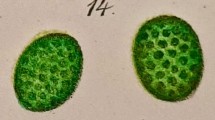Summary
The Ca2+ binding site region of the Ca2+ — ATPase of skeletal muscle sarcoplasmic reticulum was labeled with several fluorescent analogs of dicyclohexylcarbodiimide. As has been shown by Chadwick and Thomas [1, 2], in the absence of Ca2+ in the medium, labeling with the naphthyl carbodiimide results in the inhibition of enzyme activity. Further, Ca2+ occupancy of the high affinity sites of the enzyme protects against incorporation into the site(s). The fluorescent carbodiimide has been used to determine the depth of the site of label incorporation relative to the aqueous-bilayer interfaces by quenching studies using spin-labeled fatty acid derivatives. The series of quenchers used have their spin-label moiety located at different positions along the fatty acid chain. It was found that after suitable correction for differences in partitioning of the various derivatives, the order of quenching efficiency was 16 - > 12- > 10- > 7- > 5-NS, indicating that the naphthyl moiety is near the center of the bilayer. In contrast, quenching with the aqueous-restricted I− indicated that the label is accessible from the external milieu, likewise for a presumed aqueous quencher, acrylamide. The aqueous quenchers accessibilities were altered upon Ca2+ binding to the ATPase. Quenching of the intrinsic fluorescence with the x-NS derivatives indicates that the ATPase tryptophan residues are primarily localized at the aqueous-membrane interfaces, with the order of quenching being 5- > 7- > 10- > 12- > 16-NS. The trp residue(s) which changes its fluorescence upon Ca2+ binding is shown to be near the membrane surface.
Similar content being viewed by others
References
Chadwick CC, Thomas EW. Inactivation of sarcoplasmic reticulum (Ca2+ + Mg2+)-ATPase by N-cyclohexyl-N′-(4-dimethylamino-α-naphthyl) carbodiimide. Biochim Biophys Acta 730:201–206, 1983
Chadwick CC, Thomas EW: Ligand binding properties of the sarcoplasmic reticulum (Ca2+ + Mg2+)-ATPase labelled with N-cyclohexyl-N′-(4-dimethylamino-α-naphthyl) carbodiimide. Biochim Biophys Acta 769:291–296, 1984
Ikemoto N: Structure and function of the calcium pump protein of sarcoplasmic reticulum. Ann Rev Physiol 44:297–317, 1982
Inesi G: Mechanism of calcium transport. Ann Rev Physiol 47:573–601, 1985
MacLennan DH, Brandl CJ, Korczak B, Green NM: Aminoacid sequence of a Ca2+ + Mg2+-dependent ATPase from rabbit muscle sarcoplasmic reticulum, deduced from its complementary DNA sequence. Nature 316:696–700, 1985
Scott TL: Luminescence studies of Tb3+ bound to the high affinity sites of the Ca2+ ATPase of sarcoplasmic reticulum. J Biol Chem 259:4035–4037, 1984
Scott TL: Distances between the functional sites of the (Ca2+ + Mg2+)-ATPase of sarcoplasmic reticulum. J Biol Chem 260:14421–14423, 1985
Blatt E, Chatelier RC, Sawyer WH: The transverse location of fluorophores in lipid bilayers and micelles as determined by fluorescence quenching techniques. Photochem. Photobiol. 39:477–483, 1984
Pick U, Weiss M: Spectral and catalytical properties of sarcoplasmic reticulum Ca-ATPase labeled with N-cyclohexyl-N′-(4-dimethylamino-1-naphthyl)-carbodiimide. Eur J Biochem 152:83–89, 1985
Dupont Y, Chapron Y, Pougeois R: Titration of the nucleotide binding sites of sarcoplasmic reticulum Ca2+-ATPase with 2′, 3′-0-(2,4,6-trinitrophenyl) adenosine 5′-triphosphate and 5′-diphosphate. Biochem Biophys Res Comm 106:1272–1279, 1982
Nakamoto R, Inesi G: Studies of the interaction of 2′, 3′-0-(2,4,6-trinitrocyclohexyldienylidine)-adenosine nucleotides with the sarcoplasmic reticulum Ca2+ + Mg2+-ATPase active site. J Biol Chem 259:2961–2970, 1984
Pick U, Racker E: Inhibition of the (Ca2+) ATPase from sarcoplasmic reticulum by dicyclohexylcarbodiimide: evidence for location of the Ca2+ binding sites in a hydrophobic region. Biochemistry 18:108–113, 1979
Scofano HM, Barrabin H, Lewis D, Inesi G: Specific dicyclohexylcarbodiimide inhibition of the E-P + H2O ⇌ E + Pi reaction and ATP ⇌ Pi exchange in sarcoplasmic reticulum adenosinetriphosphatase. Biochemistry 24:1025–1029, 1985
Author information
Authors and Affiliations
Rights and permissions
About this article
Cite this article
Scott, T.L. Molecular topography of the Ca2+ — ATPase of sarcoplasmic reticulum. Mol Cell Biochem 82, 51–54 (1988). https://doi.org/10.1007/BF00242515
Accepted:
Issue Date:
DOI: https://doi.org/10.1007/BF00242515




